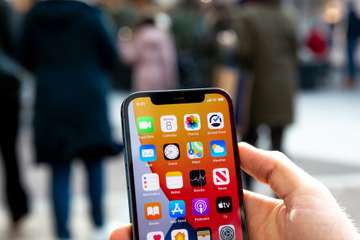Flash Calls: The Future of Seamless Phone Number Verification

Introduction: A New Era of Authentication
In today’s digital-first world, businesses are constantly seeking faster, more secure, and more cost-effective ways to verify user identities. Flash call verification has emerged as one of the most efficient methods for authenticating mobile phone numbers — offering a frictionless user experience and reducing costs compared to traditional SMS-based OTP (One-Time Password) delivery.
As adoption surges worldwide, Flash Calls are quickly becoming a core component of telephony and global SIP trunking strategies for businesses seeking to scale authentication without sacrificing speed or security.
What Are Flash Calls?
A flash call is a near-instant call that is intentionally dropped before the user answers. Instead of being answered, it simply shows up as a missed call in the recipient’s call log.
During flash call verification, the system uses some of the digits in the incoming caller ID (CLI) as the verification code. This process is handled programmatically via APIs, meaning:
The user doesn’t have to answer the call.
No code needs to be copied or pasted manually.
The verification is instant, silent, and seamless.
Because there is no termination charge for a missed call, flash calls provide a low-cost alternative to SMS verification, particularly in countries where messaging fees are high.
How Flash Call Verification Works
Here’s a step-by-step breakdown of the process:
User Action – The user signs up for an app, service, or website requiring number verification.
System Trigger – The authentication platform initiates a flash call to the user’s mobile number.
Caller ID Analysis – The app reads part of the CLI (caller ID) digits.
Instant Verification – The system compares these digits with the expected code, verifying the number automatically.
From start to finish, the entire process takes just a few seconds — and the user never needs to interact with the call.
Benefits of Flash Call Verification
1. Lower Costs
Compared to A2P (Application-to-Person) SMS, flash calls are significantly cheaper because no termination fees are charged for unanswered calls. This allows businesses to expand verification use cases — from user registration to secure logins, payment confirmations, and even public Wi-Fi access.
2. Frictionless Experience
There is no manual data entry or waiting for an SMS to arrive. Users simply see a missed call, and the verification completes automatically — reducing drop-offs and improving onboarding conversion rates.
3. Global Reach
Flash calls work on virtually any mobile network worldwide, making them ideal for businesses targeting emerging markets where SMS costs are high or delivery reliability is inconsistent.
4. Speed
The verification process takes seconds, which is crucial for applications where latency can negatively affect user experience.
Flash Calls vs A2P SMS for Verification
Factor | Flash Calls | A2P SMS |
User Experience | Seamless, no manual code entry | Requires user to enter code unless auto-read |
Cost | Lower (no termination fee) | Higher per message |
Coverage | Global, but requires CLI access | Universal, works on all devices |
Reliability | Depends on CLI visibility & network quality | High when using direct SMS routes |
Security | Vulnerable to CLI spoofing & call forwarding attacks | Vulnerable to SS7 attacks but better protected from spoofing |
Platform Support | Works best with Android apps (requires call log access) | Works across iOS and Android (with SMS permission) |
Bottom line: Flash calls are cheaper and faster, but SMS still offers universal compatibility and better customer familiarity.
Challenges and Risks of Flash Call Authentication
While flash calls are appealing, businesses should also be aware of potential challenges:
CLI Manipulation & Spoofing – Fraudsters may spoof numbers to trick verification systems.
Call Forwarding Attacks – If a user’s calls are illegally forwarded, attackers may hijack verifications.
Multi-Hop Routing Issues – Poor-quality routes can cause failed verifications or missing CLI data.
User Confusion – Some users may find missed calls suspicious unless the process is explained.
For these reasons, flash call providers often rely on direct SIP interconnects and advanced filtering to ensure call quality, detect fraud, and protect user trust.
Role of MNOs (Mobile Network Operators)
Flash calls present a monetization challenge for mobile network operators since they do not generate traditional voice or SMS revenue. To address this, MNOs should:
Deploy Voice Firewalls – To identify and filter flash calls in real time.
Create “White Routes” – Allow only authorized flash call traffic from legitimate providers.
Monetize Verification Traffic – Establish partnerships with global SIP trunking providers to fairly charge for flash call delivery.
How Dialogios Supports Flash Call Authentication
At Dialogios, we combine global SIP trunking with advanced flash call technology to deliver:
Carrier-grade reliability – Direct SIP routes for high call success rates.
Fraud prevention – Detection of spoofed CLIs and suspicious traffic patterns.
Scalable infrastructure – Support for millions of verifications per day.
Omnichannel capabilities – SMS, voice, flash calls, and telephony integrated in one platform.
Our solutions help businesses securely verify users worldwide, while helping MNOs capture revenue from this rapidly growing traffic category.
Best Practices for Businesses Implementing Flash Calls
Inform Users – Clearly notify users during registration that they will receive a missed call.
Use Direct Routes – Ensure CLI visibility by working with providers that have SIP interconnects.
Combine with SMS – Use flash calls as a primary method, with SMS as fallback for failed verifications.
Monitor Traffic – Regularly audit verification traffic for anomalies or fraud attempts.
Prioritize Security – Implement additional checks such as device binding or IP verification to reduce fraud risk.
Conclusion: Flash Calls Are Here to Stay
Flash call authentication is reshaping the future of mobile verification, offering lower costs, faster verification, and a smoother user experience.
When paired with global SIP trunking, flash calls can deliver carrier-grade performance while helping operators capture lost revenue and protect against fraud.
Ready to integrate Flash Calls into your verification strategy?
Talk to our experts today to enable global flash call authentication and scale your telephony infrastructure with confidence.